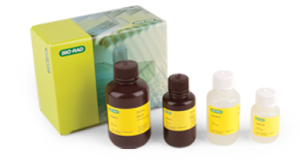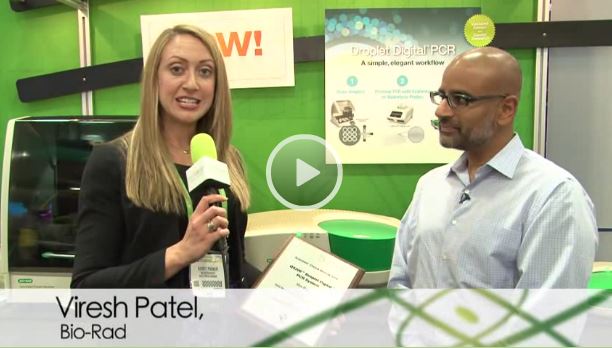Bio-Rad Laboratories, Inc. announced that it has launched its SureBeads Magnetic Bead System, which provides researchers with a faster and easier alternative to agarose beads for immunoprecipitation for as low as half the price of other available magnetic bead systems. Benefits include reduced antibody consumption and sample loss, very low nonspecific binding, and optimized IgG binding capacity.
Researchers have traditionally used agarose beads to precipitate and enrich proteins prior to western blotting or mass spectrometry. This process is time-consuming and labor-intensive, and often causes the beads to perform poorly. Since agarose beads are porous, the antibody can remain trapped inside the bead and therefore is unable to properly bind the protein of interest, requiring researchers to use more antibody.
Although magnetic beads are often more expensive, they are an attractive alternative to agarose beads for several reasons, including ease of use at the bench: magnetization is faster and more convenient than centrifugation for sample precipitation and washing steps. With the launch of the SureBeads System, scientists now have access to a high-performance, cost-effective magnetic bead system.
SureBeads Protein A and G Conjugated Magnetic Beads are designed to work with the proprietary SureBeads 16-Tube Magnetic Rack, which offers a one-piece removable magnetic strip to improve sample handling and eliminate repeated centrifugation steps, so researchers are able to achieve results up to six times faster.
“I have used magnetic bead–based systems for more than three years now, and the quality of the new SureBeads System is among the best in the field,” said Oliver Wueseke, PhD student at the Max Planck Institute for Molecular Cell Biology and Genetics in Dresden, Germany. “The real innovation resides in the rack. The slidable magnet, preferred fixation of tubes in the rack, and spacing between tubes that allows easy access to the tube lids make the SureBeads System easy to handle, faster, and more convenient.“
Visit www.bio-rad.com/NewSureBeads for more information about the SureBeads System and to learn about current product promotions.



















